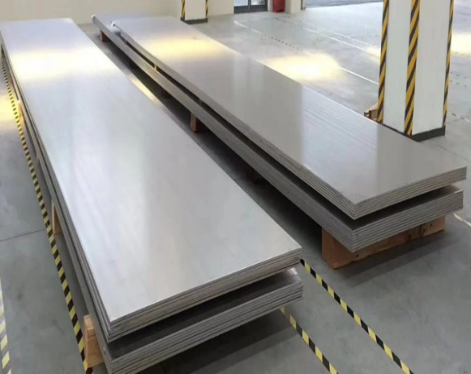The spark identification method of cs seamless pipe material is a method of judging its chemical composition by using the physical and chemical phenomena generated in the grinding process of steel materials. When the steel sample is ground on the grinding wheel, the grinding particles are ejected along the tangential direction of the grinding wheel rotation, the abrasive particles are in a high temperature state, and the surface is strongly oxidized to form a layer of Fe0 film. The carbon in the cs seamless pipe is very easy to react with oxygen at high temperature, Fe0+C→Fe+C0, which reduces Fe0; the reduced Fe will be oxidized again, and then reduced again.
This oxidation-reduction reaction is carried out in a cycle, and CO gas will be continuously generated. When the iron oxide film on the surface of the particles cannot control the generated CO gas, there will be a burst phenomenon and a spark will be formed. If there are still unreacted Fe and C remaining in the exploded particles, the reaction will continue to occur, and secondary, tertiary or multiple burst sparks will appear.
The carbon in the cs seamless pipe is the basic element for forming the spark. When the steel contains manganese, silicon-tungsten, chromium, molybdenum and other elements, their oxides will affect the line, color and state of the spark. According to the characteristics of the spark, the carbon content and other element content of the steel can be roughly judged.
The tissue properties of the cs seamless pipe after cold drawing are not uniform.
Due to the non-uniformity of deformation during the cold drawing process of the cs seamless pipe, the degree of deformation is different from the outer surface layer to the inner surface layer. The additional bending deformation and additional shear deformation near the outer surface layer are relatively large, so the total deformation degree of the outer layer is relatively large. It is larger than the inner layer, so the outer grains are finer and the hardness is higher, and the inner layer is the opposite. If the pipe wall is thicker, the friction coefficient is larger, the cone angle of the mold is larger, the difference in the total deformation degree of the inner and outer layers is also larger, and the unevenness of the structure and performance increases. After deformation, the tissue properties of the inner and outer layers are inconsistent.
This oxidation-reduction reaction is carried out in a cycle, and CO gas will be continuously generated. When the iron oxide film on the surface of the particles cannot control the generated CO gas, there will be a burst phenomenon and a spark will be formed. If there are still unreacted Fe and C remaining in the exploded particles, the reaction will continue to occur, and secondary, tertiary or multiple burst sparks will appear.
The carbon in the cs seamless pipe is the basic element for forming the spark. When the steel contains manganese, silicon-tungsten, chromium, molybdenum and other elements, their oxides will affect the line, color and state of the spark. According to the characteristics of the spark, the carbon content and other element content of the steel can be roughly judged.
The tissue properties of the cs seamless pipe after cold drawing are not uniform.
Due to the non-uniformity of deformation during the cold drawing process of the cs seamless pipe, the degree of deformation is different from the outer surface layer to the inner surface layer. The additional bending deformation and additional shear deformation near the outer surface layer are relatively large, so the total deformation degree of the outer layer is relatively large. It is larger than the inner layer, so the outer grains are finer and the hardness is higher, and the inner layer is the opposite. If the pipe wall is thicker, the friction coefficient is larger, the cone angle of the mold is larger, the difference in the total deformation degree of the inner and outer layers is also larger, and the unevenness of the structure and performance increases. After deformation, the tissue properties of the inner and outer layers are inconsistent.









